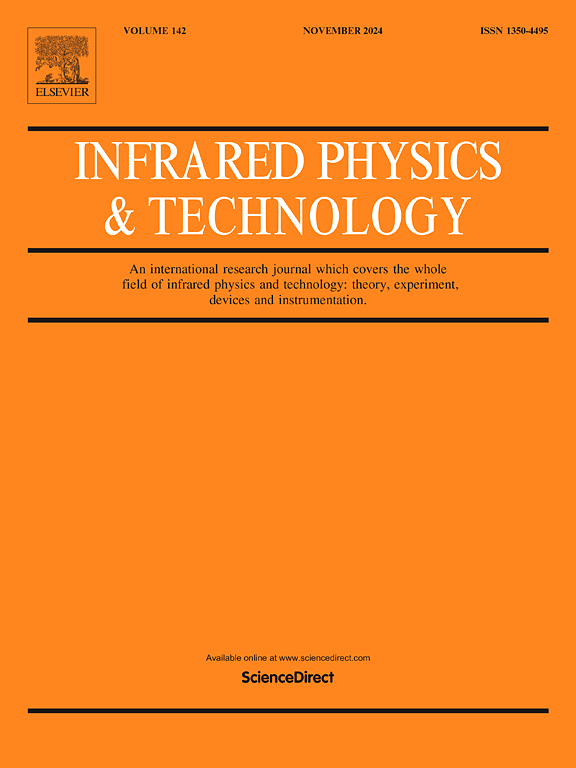Machine learning-driven strength prediction for solid waste-based backfill materials using infrared radiation indices
IF 3.1
3区 物理与天体物理
Q2 INSTRUMENTS & INSTRUMENTATION
引用次数: 0
Abstract
The resilience of underground mining systems is deeply associated with the unconfined compressive strength (UCS) of backfill components, which is key to securing safety, operational performance, and ecological balance. This investigation presents a data-centric methodology that amalgamates machine learning (ML) techniques with infrared radiation (IR) indices, specifically Average Infrared Radiation Temperature (AIRT) and Variance of Infrared Radiation Temperature (VIRT), aimed at improving the precision of UCS predictions. A thorough dataset of 180 samples focused on backfill materials taken from solid waste underwent a careful analytical methodology using progressive machine learning models, including Light Gradient Boosting Machine (LightGBM), Artificial Neural Network (ANN), Random Forest Regression (RFR), and Least Squares Support Vector Machine (LSSVM), where LightGBM yielded stellar outcomes, reaching an R2 score of 0.9276 and reflecting notably small error margins, as underlined by a mean absolute error (MAE) of 0.5618 and a root mean square error (RMSE) of 0.8803. The variance accounted for (VAF) was calculated at 0.9342, with the relative standard residual (RSR) recorded at 1.002. The prediction interval (PI) was defined as [2.0178, 5.9030], alongside a normal mean bias error (NMBE) of −0.0327. The employed methodology incorporated stringent experimental protocols, encompassing sample preparation, curing processes, UCS evaluations, and thermal imaging analyses to capture the dynamic responses elicited during loading. A user-centric graphical user interface (GUI) was engineered employing Tkinter, facilitating real-time UCS forecasts and expeditious decision-making within mining contexts. This study accentuates the transformative capacity of synergizing IR metrics with ML, presenting a replicable framework for integrating empirical testing with computational modeling. It emphasizes the necessity for larger, more heterogeneous datasets to bolster model robustness while fostering sustainable backfill design and environmentally conscientious mining practices.
基于红外辐射指标的固体废物基充填材料强度机器学习预测
地下矿山回采系统的弹性与充填体构件的无侧限抗压强度密切相关,是保障矿山安全、运行性能和生态平衡的关键。本研究提出了一种以数据为中心的方法,该方法将机器学习(ML)技术与红外辐射(IR)指数相结合,特别是红外平均辐射温度(AIRT)和红外辐射温度方差(VIRT),旨在提高UCS预测的精度。采用渐进式机器学习模型(包括光梯度增强机(LightGBM)、人工神经网络(ANN)、随机森林回归(RFR)和最小二乘支持向量机(LSSVM))对180个样本的完整数据集进行了仔细的分析,其中LightGBM产生了出色的结果,R2得分为0.9276,误差范围非常小。平均绝对误差(MAE)为0.5618,均方根误差(RMSE)为0.8803。计算方差占比(VAF)为0.9342,相对标准残差(RSR)为1.002。预测区间(PI)定义为[2.0178,5.9030],正态平均偏差(NMBE)为- 0.0327。所采用的方法包括严格的实验方案,包括样品制备,固化过程,UCS评估和热成像分析,以捕获加载过程中引起的动态响应。采用Tkinter设计了以用户为中心的图形用户界面(GUI),促进了采矿环境下的实时UCS预测和快速决策。本研究强调了IR指标与ML协同的变革能力,提出了一个可复制的框架,用于将经验测试与计算建模相结合。它强调需要更大、更异构的数据集来增强模型的鲁棒性,同时促进可持续的回填设计和环保的采矿实践。
本文章由计算机程序翻译,如有差异,请以英文原文为准。
求助全文
约1分钟内获得全文
求助全文
来源期刊
CiteScore
5.70
自引率
12.10%
发文量
400
审稿时长
67 days
期刊介绍:
The Journal covers the entire field of infrared physics and technology: theory, experiment, application, devices and instrumentation. Infrared'' is defined as covering the near, mid and far infrared (terahertz) regions from 0.75um (750nm) to 1mm (300GHz.) Submissions in the 300GHz to 100GHz region may be accepted at the editors discretion if their content is relevant to shorter wavelengths. Submissions must be primarily concerned with and directly relevant to this spectral region.
Its core topics can be summarized as the generation, propagation and detection, of infrared radiation; the associated optics, materials and devices; and its use in all fields of science, industry, engineering and medicine.
Infrared techniques occur in many different fields, notably spectroscopy and interferometry; material characterization and processing; atmospheric physics, astronomy and space research. Scientific aspects include lasers, quantum optics, quantum electronics, image processing and semiconductor physics. Some important applications are medical diagnostics and treatment, industrial inspection and environmental monitoring.

 求助内容:
求助内容: 应助结果提醒方式:
应助结果提醒方式:


